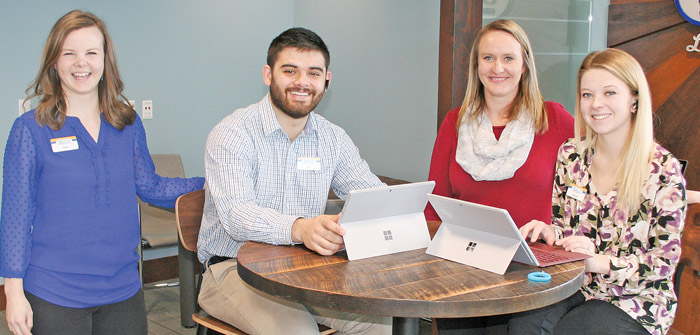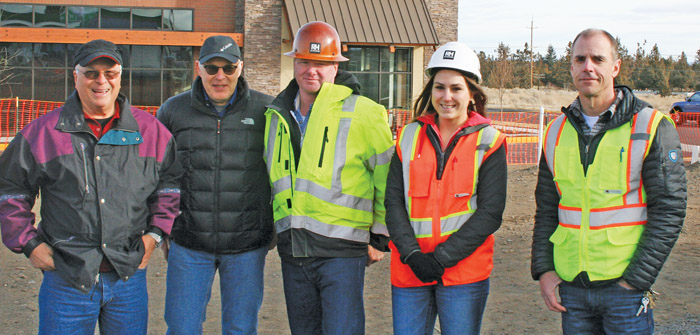
Residents of Washington and Oregon, as far back as anyone can remember, have traveled to Central Oregon for weekend getaways and traditional vacations to take advantage of the plethora of outdoor recreational activities along the hundreds of miles of shorelines and waterways, forest lands and desert sands, that define Deschutes, Crook and Jefferson Counties.
Most tourists tend to gravitate toward Bend – in 2007 Deschutes County visitors generated $7.3 million of the overall $7.9 million worth of lodging tax receipts in the tri-county region – taking up temporary residence at its hotels and campgrounds due to the city’s proximity to Mt. Bachelor, the Deschutes River and the Ochoco National Forest.
In addition rock climbers settle in and around Redmond for an early jump on their day at Smith Rock, just northeast of town while Prineville attracts its share of fishing and boating enthusiasts.
For the most part, Madras does not significantly share in the $570.8 million spent by tourists visiting Central Oregon each year, which is kind of ironic considering Madras is the first town people reach when traveling south on Highway 97 from The Dalles or Biggs, or on Highway 26 out of Portland. But fast food giants Kentucky Fried Chicken, Taco Bell, Papa Murphy’s and Sonic have noticed the 20,000 automobiles streaming through Madras on a daily basis – each franchise either opened a new restaurant during the past several months, or prepares to in the weeks ahead – signaling that plans put into place earlier this decade by the Madras Redevelopment Commission are coming to fruition, and that Madras is poised to experience the economic growth residents and city officials long have hoped would come.
“People here are ready for change,” said Rick Allen, former mayor and current broker with Lowe’s Commercial Properties of Madras. “They want quality nice things, and they want them to become part of their own identity. Historically, the town’s residents have not been opposed to change, by and large. There have never been groups storming city council meetings, or people becoming part of an organized movement that argued and fought against new development.
“People here have been pretty receptive to new ideas, but at the same time we want to make sure we maintain our country flair, and we are small enough that (losing that identity) is a long way from becoming a significant risk.”
THE HUMP
It all started with “The Hump,” an unsightly piece of land across the street from the Black Bear Diner at the north entrance to town where Highways 26 and 97 converge. The Hump, so called because the old houses built in the 1940s standing on it, which were awash in graffiti and home to many transients over the years, sat on top of about 8,000 cubic yards of sandstone. It used to be the first thing anyone driving into town saw, and for years it was an embarrassment to civic leaders and citizens alike who batted around plans for redevelopment. The Hump garnered the nickname “Golden Corner” because of the potential real estate windfall it represented at the corner of Fourth and D Streets.
In October 2006, then-Mayor Frank Morton told The Bulletin newspaper that Madras’ real estate renaissance would begin with The Hump’s redevelopment. That winter, construction crews demolished the old houses and leveled the The Hump, and by August The Brickhouse Group, a consortium of mainly local investors, began construction on the three-story Harriman Building, which is now home to Madras’ first upscale dining establishment called Genos’ Italian Grill; it opened to great fanfare last month, and now curious patrons can be seen filling the tables that line the windows facing Highway 97 each night.
“When that came to be, the term people used (for leveling The Hump) was removing blight,” Madras City Councilor Tom Brown said. “I’m not sure if that’s the right term. Basically, what we are trying to do is upgrade things – areas like where the Harriman Building is that really weren’t being used. Upgrades and improvements to the face of the city are difficult for individual developers and business owners to do, but they’re not difficult for a municipality to lead.”
CITIZEN INPUT
In 2004-2005, the City of Madras hosted a series of community events designed to generate citizen input on changes people would like to see. Various committees were created, sometimes with as many as 35-or-so people, and it turned out that the idea of giving the town a face lift was popular and well received, Allen said.
Ideas included construction of a high-end hotel with meeting space, which led to development of the Cross Key Station hotel, complete with a meeting room for 200 people – the first new hotel built in Madras in 20 years.
Residents wanted a civic center area that would house a new city hall, police station, and chamber of commerce; a civic center is now planned on land near the Harriman Building. And there was a strong desire for new, state-of-the-art retail space – land has been cleared for the 12,000-square-foot Jefferson Square, a mixed-use project with plans that include a four-screen movie theater on the south end of town next to Kentucky Fried Chicken. It is slated for completion by March 2010.
The city also financed construction of a $2.64 million, 30,000-square-foot DC-7 hanger at the Madras Airport, and is leasing it to Butler Aircraft. The company will use the facility for large aircraft repair and maintenance. Butler Aircraft was planning to move from the area, citing a lack of adequate facilities, before Madras received a $2.1 million Connect Oregon II grant and put up matching funds of its own totaling $539,437 to build the hanger. More than $20 million is expected to be infused into the local economy during the first 10 years of Butler Aircraft’s operation, based on the $50,000 average annual salaries of the 12 new jobs being created.
Strict building codes also have been enacted to make sure Madras retains its small-town flavor during this redevelopment phase.
NO BIG BOX
“Part of the plan includes no Super Wal-Mart-type stores,” Brown said. “There is a whole set of design standards that says anything above 30,000 square feet, you can’t just build a box. And there is a cap on building anything over 150,000 square feet – you can’t be obnoxious and build a 250,000-square-foot retail store. For a small town that’s gutsy because the (large retail corporations) are all over you to allow it. When we enacted those standards we were looking ahead, and this is all starting to pay off but it has taken years to materialize. It’s kind of exciting.”
And a 15-item action renewal plan, called the “Streetscape Design Report,” which includes planning for aesthetic projects like new street improvements, landscaping, trash bins, and other ideas, that is expected to be adopted by the Madras Planning Commission later this month. Meanwhile, the city is well into improvements on Southeast B Street that include new streetlights, bicycle parking, a half-mile of sidewalks and a concrete crosswalk where Southeast B intersects with Southeast 10th Street.
Wayne Pearson, Economic Development for Central Oregon’s Jefferson County manager, said improving the general appearance of Madras, coupled with new retail development and the opening of new restaurant choices, helps EDCO in its efforts to attract new companies to relocate in and around the city.
“When we are recruiting companies to come into the area, we hear from them that they want to have a lot of diversification, such as retail establishments so people don’t have to go great distances to get what they need,” Pearson said. “We encourage not only Madras, but Culver, Metolius and every town in Jefferson County, to do everything they can to make their communities attractive so it’s easier to entice more people to want to look at them, and to be a desirable place to live.”
Getting people to stop and notice Madras is where the proliferation of fast food franchises comes into play, Pearson said.
“I drive back and forth to and from Portland quite a bit, and coming from Sandy, driving an hour and a half into Madras, (citizens and city officials) would like it to be a place people will stop,” he said. “Having fast food places hopefully entices people to stop and experience Madras as a community. Many times, drivers will stop and come inside an establishment to talk with local people, pick up local publications from news racks to find out more about the area, or they’ll see a store that piques their interest and visit it.”
And beyond the fast food outlets, city officials have high hopes that the construction of the new Mid Oregon Credit Union downtown, set to open later this year, will usher in a new era of commercial loans backed by a local lender.
“I am extremely encouraged by that because banks are important to a community for lending to local people and businesses,” Madras Planning Director Nick Snead said. “At a minimal level, a bank can offer basic banking services and make money here, but looking beyond that, when we come out of the economic downturn they are going to have money to lend, and that will only be an asset and benefit to the community because we will have more capital here.
“We now have a great hotel to welcome people, and new options for people to go out and eat,” Snead continued. “This redevelopment puzzle is creating certain things in the community that will help attract and keep people here. We’re making great progress in Madras.”





